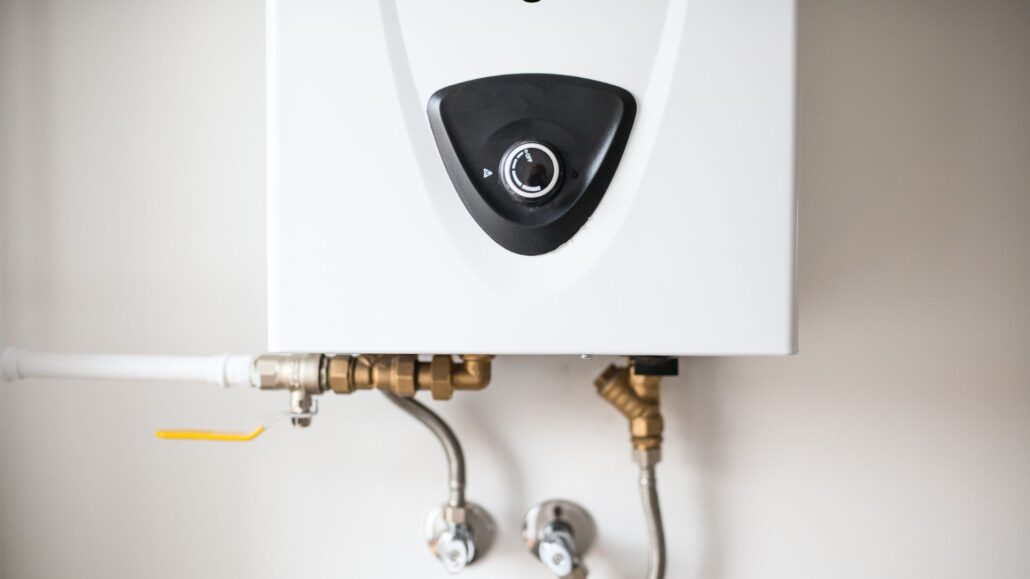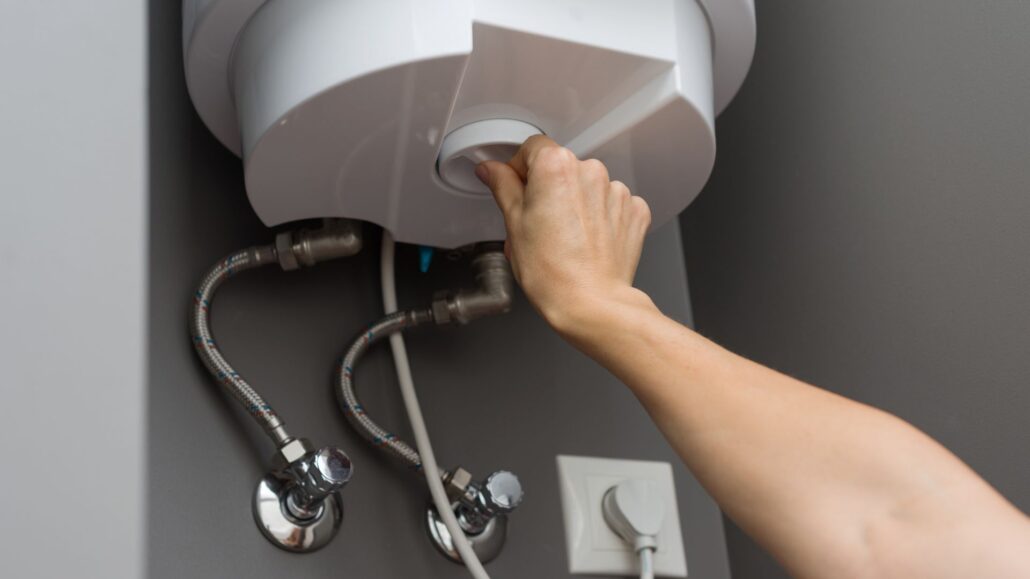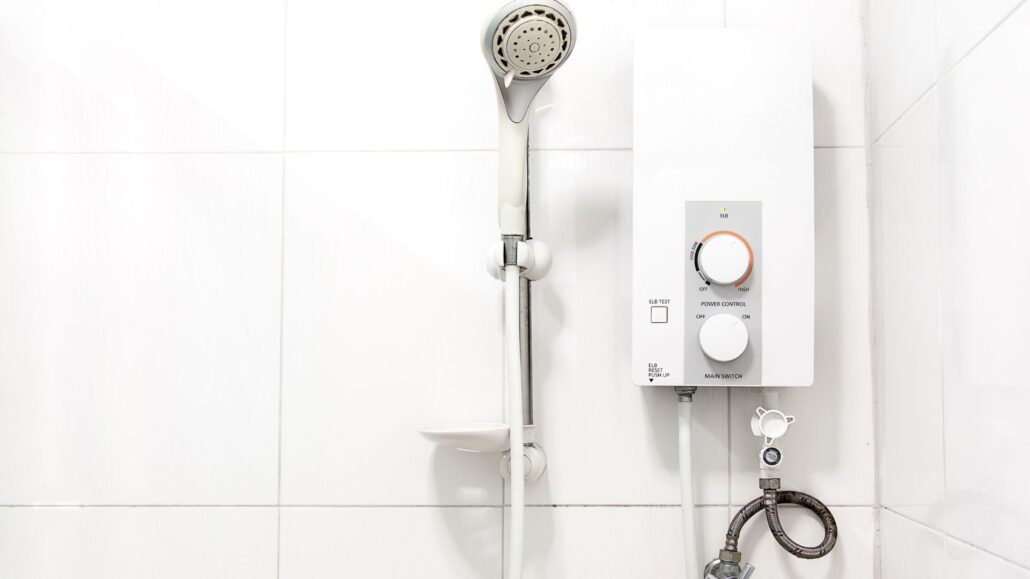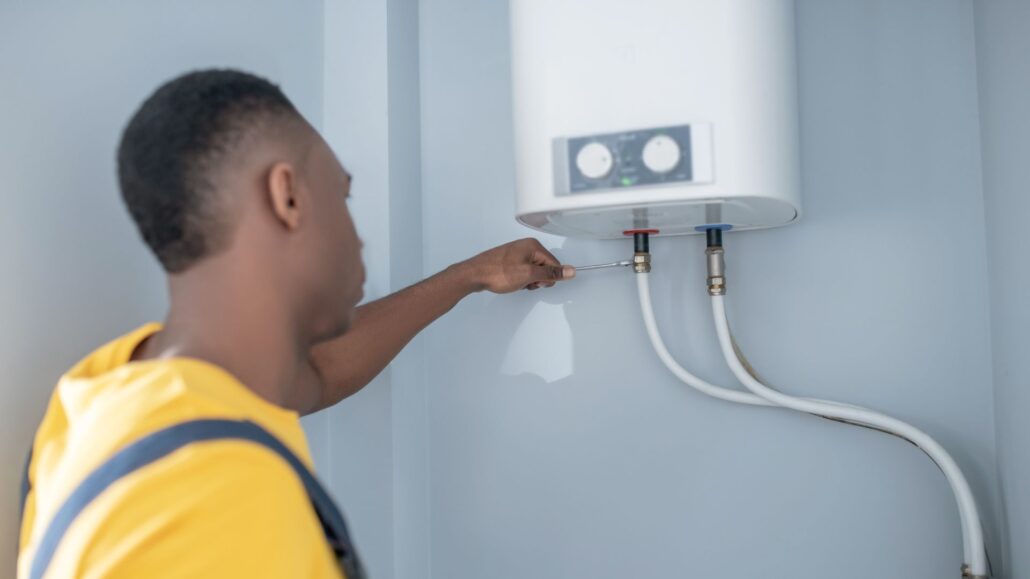Installing a new tankless water heater requires a thoughtful evaluation of your household’s hot water requirements. With the potential for unlimited on-demand hot water, superior energy efficiency, and space-saving compact size, tankless systems can transform your home. However, identifying the ideal tankless model tailored for your fuel type, flow rate needs, and installation layout takes diligent research.
This comprehensive guide arms homeowners with the knowledge to carefully assess daily hot water usage for bathing, cleaning, and laundry. We’ll provide key questions to answer to calculate the right flow rate and power output to supply hot water for multiple uses. You’ll learn how to choose between gas, electric or propane-powered units based on utility connections and costs.
With details on positioning tankless heaters to optimise internal water piping, this guide takes the guesswork out of purchasing and expertly configuring the perfect tankless water heater system specific to the unique needs of your household.
What is a Tankless Water Heater?

Unlike traditional tank-style water heaters that store heated water, tankless units only heat water as needed.
So, how does a tankless water heater work? Well, cold incoming water temperature passes through a heat exchanger that rapidly raises it to the desired temperature using gas burners, electric coils or other heating methods.
Many tankless water heaters provide hot water endlessly on demand without running out. They heat water far more efficiently than constantly cycling tank heaters, using less energy and lowering utility bills. Tankless models also take up less space without a bulky storage tank.
For homes with increased hot water needs, like large families, high-flow fixtures, or hot tubs, a tankless water heater can be the perfect solution for consistent hot water.
Fuel Type: Gas vs Electric

The first decision is choosing gas or electric to power your tankless heater. Gas tankless units use natural gas or propane. Electric models use electric heating elements. Each option has pros and cons to weigh:
Gas Tankless
Pros:
- More powerful, can handle higher flow rates
- Energy factor above .80 for excellent efficiency
- Cheaper operating costs in most regions
Cons:
- Needs ventilation and a gas line connection
- Higher upfront costs
Electric Tankless
Pros:
- Easier to install; just an electrical connection is needed
- Good for solar or generators as backup
- Lower purchase price
Cons:
- Limited flow rate around 3 GPM
- Higher energy costs in some areas
For larger homes with increased demand, gas typically works better. Electric ones can suffice for smaller households with less simultaneous use.
Sizing for Your Hot Water Demand
A common mistake is undersizing your tankless unit for the hot water needs of your home. This results in disappointing performance and temperature fluctuations.
Carefully calculate your peak demand based on the following:
- Number of bathrooms, faucets, showers, etc. running simultaneously
- Flow rates of your fixtures (GPM)
- Desired temperature rise
- Incoming groundwater temperature
This gives your total GPM needed. Choose a tankless model rated at least higher than your peak demand for a buffer. Oversizing is better than undersizing.
Also, ensure your gas line or electrical panel can support the power needs of the unit. Getting the right size matters most for satisfaction.
Look At The Flow Rate

As noted above, the flow rate is measured in GPM or gallons per minute. It indicates how many gallons of water the tankless heater can raise to a certain temperature in one minute.
The flow rate depends on the heating elements and determines the number of hot water demands the unit can handle at once. Larger homes need higher flow rates.
Gas tankless models often range from 5 GPM for whole-home use. Electric units are usually 3 GPM for point-of-use or small households. Know your needed GPM based on the hot water fixtures running simultaneously to pick an adequately sized model.
Installation Requirements
Proper installation is critical for ensuring your new tankless water heater performs as expected. While tankless heaters are compact in size, their installation process is more complex than traditional tank-style units. There are several important requirements to factor in when planning your tankless water heater installation.
First, ensure your electrical service panel has adequate amperage, breaker capacity and wiring to support the power demands of the unit. Tankless heaters require a large power draw. For gas-fired units, verify your gas line has sufficient BTU capacity and pressure to fuel the tankless heater under full load.
This may require installing larger gas lines. Ventilation is also important for gas models to safely exhaust combustion gases – make sure your location allows proper venting to the exterior.
Condensing tankless heaters produce a steady stream of condensate from the exhaust and will require installing a drainage line. Condensate must be neutralised before disposal. To prevent freezing, the condensate line needs heat tracing for outdoor units in cold climates. Consider all aspects of ventilation and condensate removal during planning.
Additional considerations include upgrading your water pipes from the heater to fixtures to sufficiently handle the increased flow rate, installing a whole-home water filtration system to reduce mineral scale buildup in the heat exchanger, and properly controlling the unit based on water temperature.
Account for all necessary plumbing modifications, wiring, gas lines, ventilation, condensate management and controls to ensure seamless integration and optimal performance. Hiring professional plumbers experienced in tankless installation is highly recommended over taking a DIY approach. The cost of experts is well worth it for avoiding problems down the road.
Condensing vs. Non-Condensing Designs
You’ll need to select between a condensing or non-condensing design for gas-powered tankless water heaters. Condensing tankless water heaters extract more heat by condensing latent water vapour from combustion exhaust. This extra efficiency comes at the cost of draining the produced condensate, which must be neutralised first.
Condensing units are also more expensive upfront but provide lower operating costs over time. Non-condensing tankless heaters vent exhaust similar to traditional tank water heaters, allowing simple venting like you may already have.
They waste some heat but avoid condensate drainage needs and are generally more affordable to purchase. In most cases, the higher efficiency of a condensing gas tankless water heater makes them the better investment for the long run unless venting and condensate removal pose challenges in your specific installation location.
Ongoing Maintenance Requirements

While tankless water heaters can last over 20 years with proper maintenance, they do require some periodic servicing to keep performing optimally. Recommended tankless water heater maintenance includes inspecting and cleaning the internal heat exchanger to prevent mineral scale build-up, treating your household water to reduce hard water deposits, checking and replacing filters that screen sediment and testing temperature and flow rate to catch any decreases indicating servicing is needed.
Occasionally, removing bird nests that can form inside is also advised for outdoor units. Follow the manufacturer’s suggested maintenance schedule and guidelines to keep your tankless system running efficiently for decades. Hiring a professional plumber to handle servicing is often worthwhile to maximise performance and longevity.
Choosing Between Gas and Electric
When weighing gas versus electric tankless water heaters, you’ll primarily want to consider your available infrastructure and operating costs.
Gas pros include higher flow rates for whole-home use and lower operating costs in most regions. Gas cons are venting requirements and higher upfront costs.
Electric pros are easier plug-and-play installation and solar/generator compatibility. Electric cons are limited flow rates around 3 GPM and potentially higher electrical costs depending on utility rates.
Carefully weigh your household’s hot water demand, energy costs, and existing setup to select between gas or electric.
New Install vs. Replacing Old Unit
When replacing an existing water heater, the tankless installation is slightly more complex, often requiring upgrading electrical panels or gas lines, adjusting venting and water lines, updating piping size for flow rate, and improving water filtration.
Many find the upgrade worthwhile for endless hot water and energy savings. But factor in added costs if replacing your current unit. For new construction, tankless installation is more straightforward. Either scenario can work; just account for additional steps when replacing.
The Energy Efficiency Advantage
One of the greatest benefits of tankless water heaters is enhanced energy efficiency, saving monthly costs. Gas tankless models have efficiency ratings or Energy Factor (EF) above .80. Electric versions have an EF around .99. These meet ENERGY STAR standards.
Tankless heaters only operate when hot water is needed, unlike tank heaters that constantly maintain temperature. By providing hot water on-demand, tankless models can cut water heating costs by up to half in homes that use 41 gallons or less per day, depending on energy prices, usage patterns and heater settings. In general, tankless offers significantly lower operating expenses.
Endless Hot Water, Made Easy with The Brisbane Plumbers
Choosing the ideal tankless water heater takes research into your household’s requirements. Calculate your peak demand, determine adequate flow rates and installation needs, and compare tankless gas water heaters with electric models to select the perfect tankless unit.
Proper sizing and installation are key to enjoying endless hot water, utility savings and satisfaction. For guidance in selecting and installing the right tankless heater for your home, contact the experts at The Brisbane Plumbers.
FAQs
What are the pros and cons of tankless water heaters?
The biggest pros of tankless water heaters are the ability to provide an endless supply of hot water on demand, enhanced energy efficiency compared to traditional tank heaters, space savings from their compact size, and a long lifespan of 20 years.
Some potential downsides are the higher upfront costs, more complex installation process involving ventilation, gas lines, condensate drainage, etc., and possible limitations on flow rate if the unit is undersized for the household’s peak demand. Careful sizing and installation are key to maximising the benefits.
How do I determine if I have enough gas or electric capacity for a tankless water heater?
It’s highly recommended to consult a qualified, licensed plumber to assess your current electrical service panel amperage and breaker capacity or your gas BTU capacity coming into your home. They can analyse the existing infrastructure, measure available capacity, and look at any needs for upgrading wiring, gas tankless water heaters, or adding a sub panel to support the power demands of a new tankless water heater under full load. The proper infrastructure is crucial for optimal performance.
Should I go for a combination tank-tankless system?
A combination system that pairs a small tank water heater with a tankless unit is a great option for some homes. The tank provides the base level of heating for daily needs, while the tankless kicks in during high-demand periods to provide an endless hot water supply.
This hybrid approach reaps many of the benefits of tankless without requiring such a large unit since the tank handles the baseline demand. Combination systems are worth considering if regular tankless sizing would be borderline for your household usage.
Where is the best place to install my tankless water heater?
Most tankless water heaters are installed indoors close to the main incoming water lines, often in a basement, utility room, or garage. This provides short pipe runs for efficiency.
Outdoor installations are also an option if weatherproofing, like insulated enclosures or freeze protection, is added in cold climates. The priority is placing the unit as close as possible to the point of use for faster hot water delivery.
How do I determine the right size tankless water heater?
Calculating your peak hot water demand in gallons per minute (GPM) based on the number of bathrooms, showers, sinks, etc., running at once, along with the flow rates of your specific fixtures, is key. Add at least 20-25% extra capacity as a buffer. This helps prevent under-sizing, which can lead to inconsistent temperatures and flow. Always oversize rather than undersize your tankless unit to ensure it can handle even worst-case scenarios.
Should I hire a professional to install my tankless water heater?
Yes, it is highly recommended to hire a qualified, licensed plumber to install a tankless water heater. Tankless heaters have very specific venting, gas lines, condensate drainage, electric, water filtration, and other requirements that professionals are best equipped to handle fully. Their expertise can ensure optimal performance, safety, code compliance, and longevity.
How often does a tankless water heater need maintenance?
Most manufacturers recommend having a tankless water heater professionally serviced at least annually. This helps inspect components, flush the system, check for scale buildup or obstructions, change filters, and test temperature and flow rate performance.
The manual will outline specific maintenance tasks and schedules. Proper preventative care is crucial for getting the longest functional lifespan out of your tankless system.
